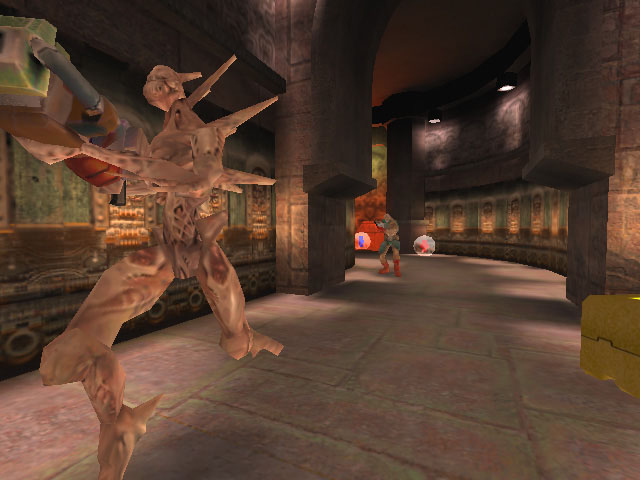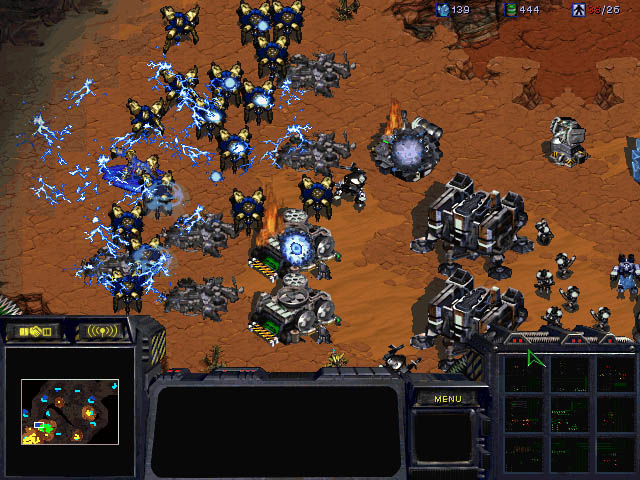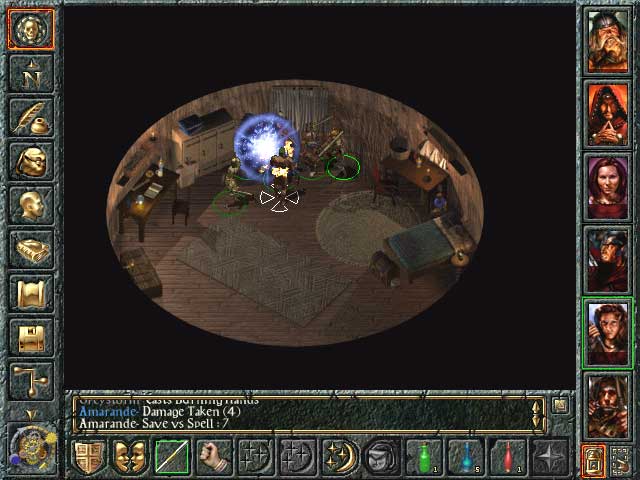
Quake 3: I don't know what this thing is, but it doesn't look friendly. Better blow it up.
Economics 361N Final Project
Hardware
In today's world, cutting edge home PC hardware is required for only two things: graphic design and
computer gaming. Seeing as how computer gamers vastly outnumber graphic designers, it is fairly
safe to conclude that the majority of advancements in computer hardware are driven by gamer demand.
As computer games become larger, more complex, and more visually and audially immersive, stronger
and faster computers are needed. It can be argued that larger hard drives, more RAM, and faster processors
are good for any computer user. However, advanced graphics and sound cards are used almost exclusively for
gaming and this is the area of computer hardware that gaming influences the most.
The graphics for new games can be rendered in one of two ways: hardware or software. Software rendering means
the main processor handles the rendering for in-game graphics. Hardware rendering, which can be used if
the computer has a dedicated (usually 3d) video card installed, frees the main processor from
drawing the graphics and delegates the task to the dedicated video card instead. The newest video cards have
large amounts of onboard RAM that are used for nothing other than graphics. This leads to extremely high quality
images with an extraordinary amount of detail, running at very high frames per second (FPS). High FPS results in
very smooth gameplay, in the same way in which a movie running with many frames per second will look less jerky.
One of the leading manufacturers of high-performance video cards is 3dfx Interactive,
the company that produces the popular Voodoo 3 video card. Hardware such as the Voodoo 3 is pretty much required to play
many of the newest games like Mechwarrior 3,
Starsiege Tribes, and
Homeworld. Since gamers are always
eager to try out the latest computer game, they anticipate new releases in video and sound cards, such
as the Sound Blaster 64 Gold by Creative Labs
with equal enthusiasm.
Software and Types of Games
There is tremendous variety in the types of computer games which are available. Specific genres
are usually established by a few trial games followed by an immensely successful game. This
process of development is evidenced most recently by the advent of the first-person shooter and
real-time strategy genres.
One of the most popular genres today is the first-person shooter. First person shooters got started
with Wolfenstein 3d, were made popular by Doom, and are represented today by such notables as
Quake II & III, Starsiege Tribes,
and Half-Life. This genre is played
from a first-person view and generally consists of acquiring weapons and obliterating hordes of monsters.



